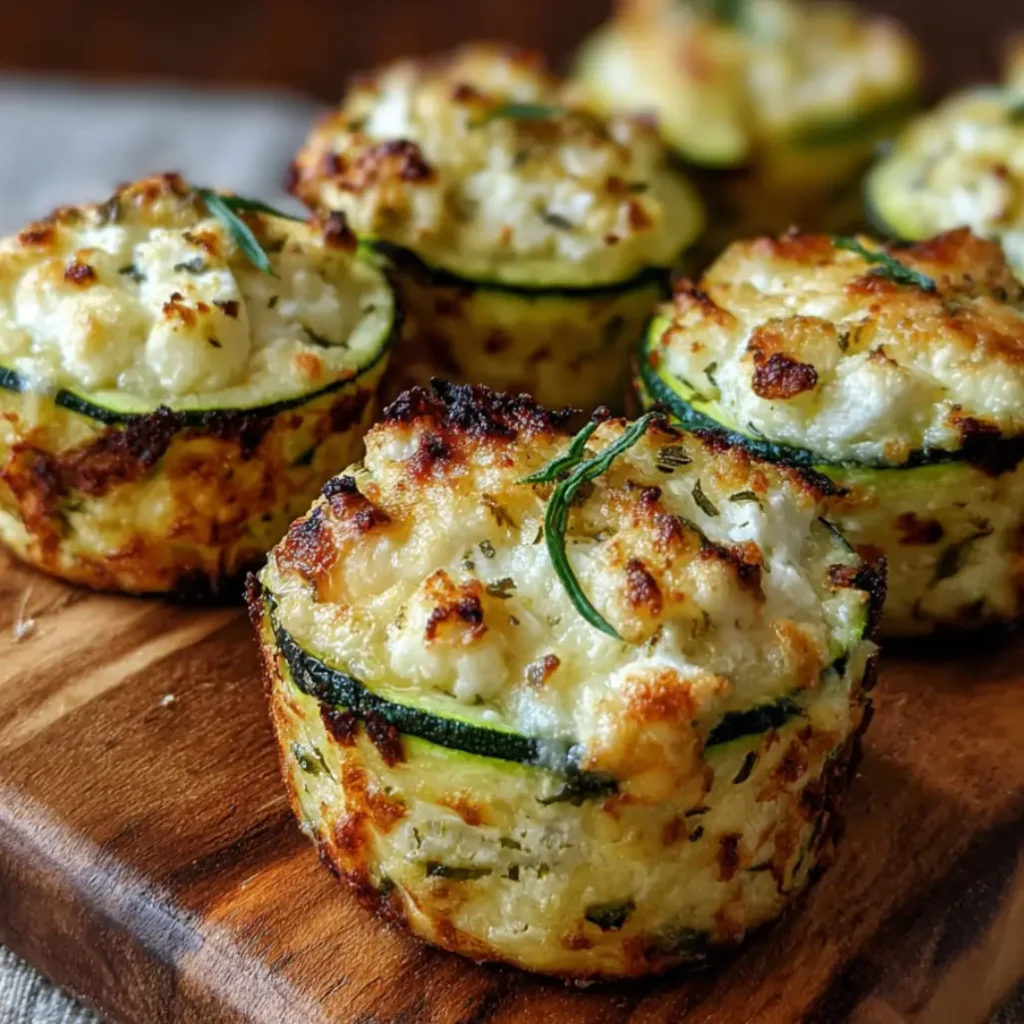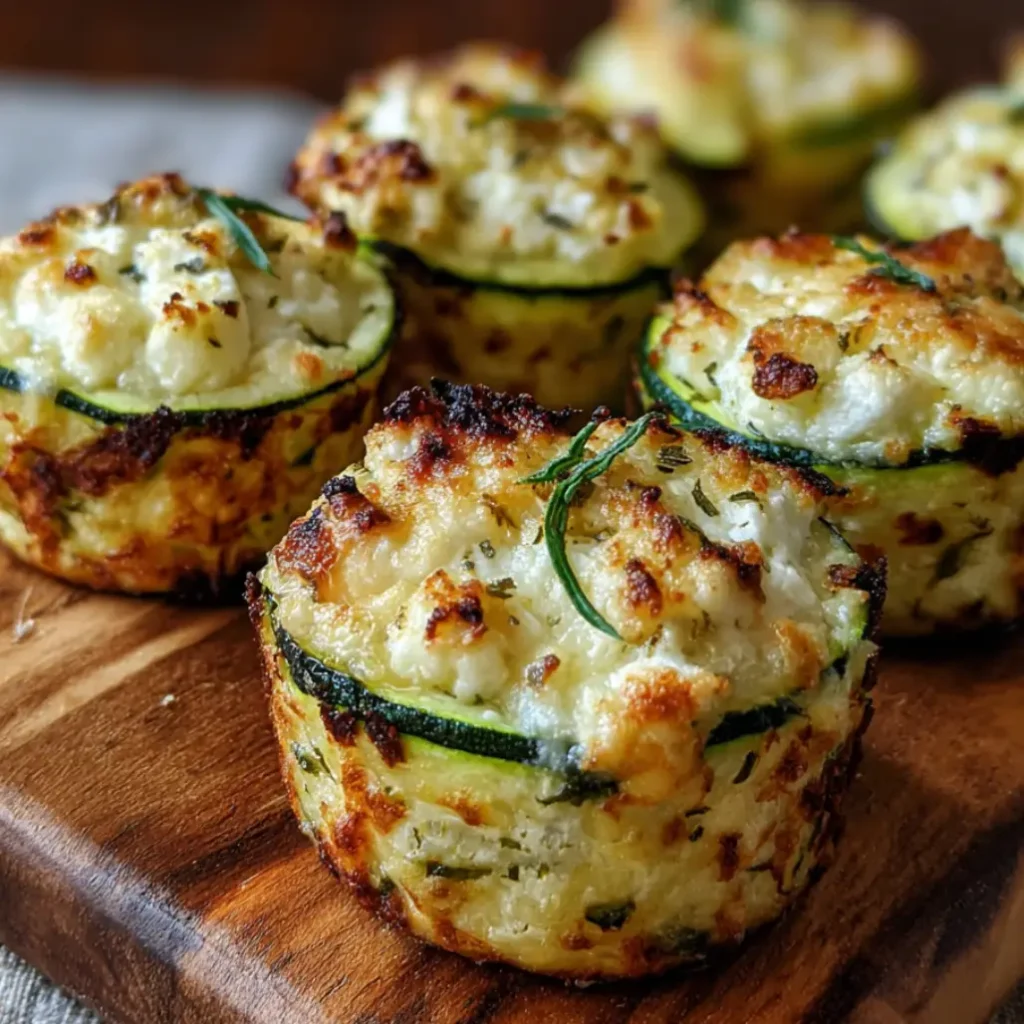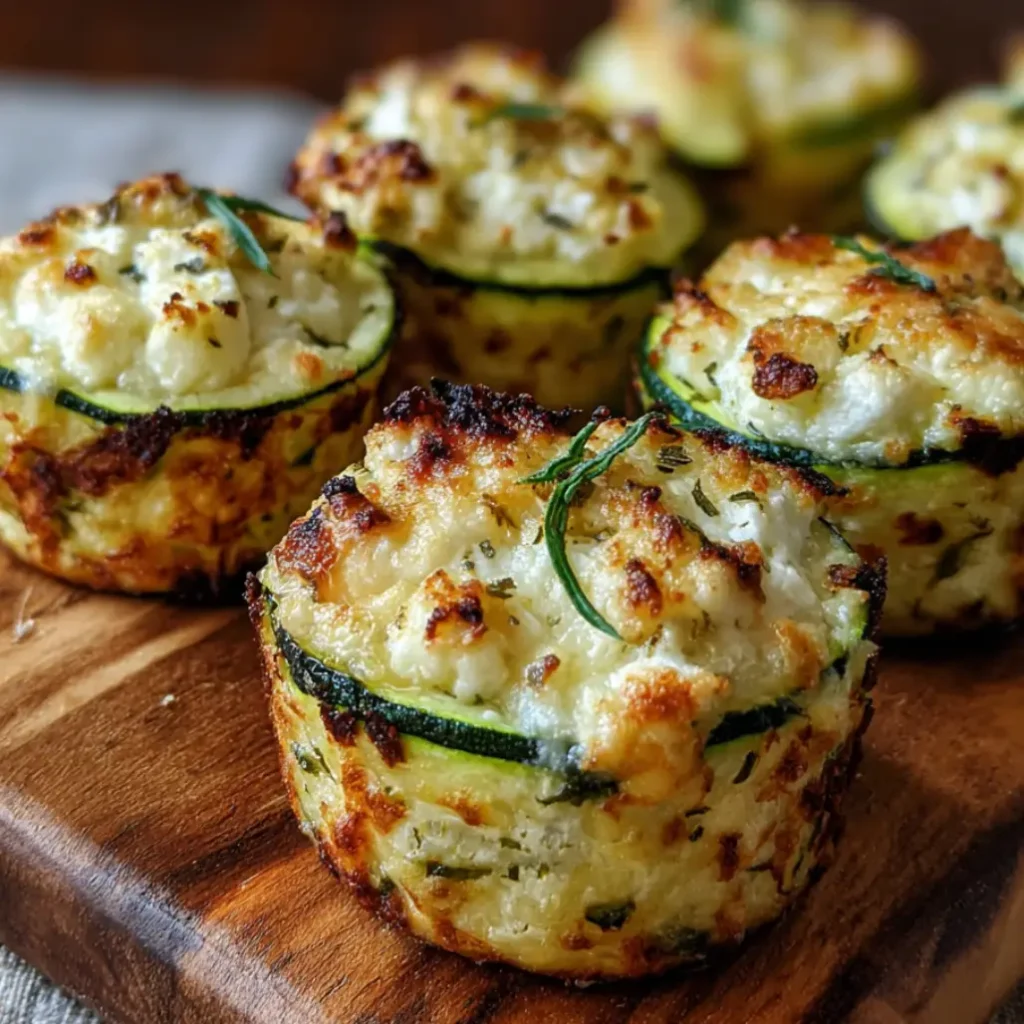| Prep Time: 15 minutes | Cook Time: 25 minutes | Total Time: 40 minutes | Serves: 12 |
These delightful zucchini cottage cheese cups represent the perfect marriage of wholesome nutrition and irresistible flavor, transforming humble garden zucchini into protein-packed individual portions that will revolutionize your meal planning because they deliver exceptional taste while supporting your health goals with every satisfying bite.
Why Zucchini Cottage Cheese Cups Are Your Next Kitchen Obsession
Zucchini cottage cheese cups have emerged as the ultimate solution for busy households seeking nutritious meals that don’t compromise on flavor, because these versatile individual portions combine the moisture-rich properties of fresh zucchini with the protein power of cottage cheese to create a satisfying dish that works beautifully for breakfast, lunch, or dinner. The beauty of these cups lies in their incredible adaptability, allowing you to customize flavors and ingredients while maintaining the foundational benefits that make them so appealing to health-conscious cooks everywhere.
Each cup delivers approximately 8 grams of high-quality protein thanks to the cottage cheese and eggs, making them an excellent choice for anyone looking to increase their protein intake without relying on meat-based options, because the combination of dairy proteins provides all essential amino acids your body needs for optimal function. The zucchini contributes valuable fiber, vitamins, and minerals while adding natural moisture that keeps these cups tender and flavorful, because this versatile vegetable contains significant amounts of vitamin C, potassium, and antioxidants that support overall health.
The individual portion format makes these zucchini cottage cheese cups incredibly convenient for meal prep enthusiasts, because you can bake a batch on Sunday and have grab-and-go meals ready throughout the week that maintain their texture and flavor even when reheated. Parents particularly love these cups because they offer a sneaky way to incorporate vegetables into their children’s diets without the typical resistance that comes with serving plain zucchini, making family mealtime more harmonious while ensuring everyone gets essential nutrients.
Essential Ingredients for Perfect Zucchini Cottage Cheese Cups
Fresh Zucchini – 2 medium zucchini (approximately 1 pound), grated and moisture removed Cottage Cheese – 1 cup whole milk cottage cheese, preferably small curd for better texture Large Eggs – 3 whole eggs, room temperature for optimal binding All-Purpose Flour – 3/4 cup, sifted for lighter texture Sharp Cheddar Cheese – 1/2 cup freshly grated for maximum flavor impact Yellow Onion – 1 small onion, finely diced for aromatic depth Fresh Garlic – 2 cloves, minced for savory complexity Baking Powder – 1 teaspoon for proper rise and texture Italian Seasoning – 1 tablespoon dried herbs for Mediterranean flair Sea Salt – 1 teaspoon for flavor enhancement Black Pepper – 1/2 teaspoon freshly ground for subtle heat Olive Oil – 2 tablespoons extra virgin for richness and moisture Fresh Chives – 2 tablespoons chopped for bright finishing notes
The quality of your cottage cheese significantly impacts the final result, because higher-fat varieties like whole milk cottage cheese provide superior texture and richness compared to low-fat alternatives that can make your cups dense and less flavorful. Fresh zucchini should feel firm and heavy for its size, with glossy skin free from soft spots or blemishes, because quality produce translates directly to better-tasting cups that showcase the vegetable’s natural sweetness and moisture content.
The Art of Creating Exceptional Zucchini Cottage Cheese Cups
Creating exceptional zucchini cottage cheese cups begins with understanding the critical importance of moisture management, because excess water from the zucchini can turn your beautifully crafted cups into soggy disappointments that lack the desired texture and structural integrity. The key lies in properly preparing your zucchini through grating, salting, and thorough draining techniques that remove unnecessary moisture while preserving the vegetable’s essential flavors and nutritional benefits.
Temperature control throughout the preparation and baking process ensures consistent results, because room temperature ingredients blend more effectively while proper oven temperature creates the ideal environment for even cooking that produces golden-brown exteriors and perfectly set interiors. The balance between wet and dry ingredients requires careful attention, because too much liquid results in cups that won’t hold their shape, while insufficient moisture creates dense, unappetizing portions that lack the tender crumb everyone expects from quality baked goods.
Timing plays a crucial role in achieving perfect zucchini cottage cheese cups, because the preparation steps must flow smoothly to prevent over-mixing the batter, which can develop tough gluten strands that compromise the final texture. Professional bakers understand that gentle folding techniques preserve the delicate structure while ensuring even distribution of ingredients throughout the mixture, creating cups with consistent flavor and appearance in every bite.
Step-by-Step Instructions for Zucchini Cottage Cheese Cup Mastery
Step 1: Prepare Your Zucchini Foundation
Preheat your oven to 375°F and generously grease a 12-cup muffin tin with olive oil or cooking spray, ensuring complete coverage to prevent sticking, because properly prepared pans make the difference between easy release and frustrating cleanup. Wash your zucchini thoroughly under cold running water, then trim both ends before grating using the large holes of a box grater, creating uniform shreds that will distribute evenly throughout your cups.
Transfer the grated zucchini to a large bowl and sprinkle with 1 teaspoon of salt, tossing thoroughly to ensure even coating, because salt draws out excess moisture through osmosis while simultaneously beginning the flavor development process. Allow the salted zucchini to rest for 10 minutes, during which time you’ll notice significant liquid accumulation in the bottom of the bowl, indicating the moisture extraction process is working effectively.
Professional Tip: Place the salted zucchini in a clean kitchen towel or several layers of paper towels, gathering the corners to create a pouch, then twist and squeeze firmly to extract as much liquid as possible, because removing this excess moisture prevents soggy cups while concentrating the zucchini’s natural flavors.
Key Points: Proper zucchini preparation involves thorough washing, uniform grating, strategic salting, adequate draining time, and aggressive moisture removal to ensure optimal texture and flavor in your finished cups.
Step 2: Create Your Flavor Base
Heat 1 tablespoon of olive oil in a medium skillet over medium heat, then add the diced onion and cook for 3-4 minutes until softened and translucent, because this gentle cooking process develops sweet, complex flavors that form the aromatic foundation of your cups. Add the minced garlic during the final minute of cooking, stirring constantly to prevent burning, because garlic requires minimal cooking time to release its pungent oils without developing bitter notes that can overpower the delicate cottage cheese flavor.
Remove the skillet from heat and allow the onion-garlic mixture to cool slightly while you prepare the remaining ingredients, because adding hot vegetables directly to your egg mixture can cause unwanted curdling that affects both texture and appearance. Season the cooled vegetables with a pinch of salt and pepper, tasting to ensure proper seasoning balance before incorporating into your batter.
Professional Tip: Cooking your aromatics beforehand eliminates raw onion bite while ensuring even flavor distribution throughout each cup, because raw vegetables can release moisture during baking that compromises structural integrity.
Key Points: Gentle sautéing develops complex flavors, proper cooling prevents curdling, and pre-seasoning ensures balanced taste throughout the finished product.
Step 3: Blend Your Protein-Rich Base
In a large mixing bowl, whisk the cottage cheese until relatively smooth, breaking up any large curds that might create uneven texture in your finished cups, because homogeneous cottage cheese integrates better with other ingredients while providing consistent protein distribution. Add the eggs one at a time, whisking thoroughly after each addition to ensure complete incorporation, because gradual egg addition prevents lumps while creating the smooth, custard-like base that gives these cups their characteristic texture.
Incorporate the remaining tablespoon of olive oil, Italian seasoning, remaining salt, and black pepper, whisking until the mixture appears uniform and well-blended, because proper seasoning at this stage ensures every cup delivers consistent flavor impact. Add the cooled onion-garlic mixture and grated cheddar cheese, folding gently to distribute evenly throughout the cottage cheese base without over-mixing.
Professional Tip: Room temperature eggs incorporate more easily than cold eggs, so remove them from the refrigerator 30 minutes before beginning your recipe, because temperature-matched ingredients blend more smoothly and create better emulsification.
Key Points: Smooth cottage cheese blending, gradual egg incorporation, thorough seasoning, and gentle folding techniques create the ideal protein-rich foundation for exceptional cups.
Step 4: Combine and Balance Your Ingredients
Sprinkle the flour and baking powder over your cottage cheese mixture, then use a rubber spatula to fold these dry ingredients gently into the wet base, using broad strokes that bring ingredients together without developing gluten, because over-mixing creates tough, dense cups that lack the tender texture everyone expects. Add the drained zucchini and fold just until evenly distributed, maintaining gentle movements that preserve the vegetable’s structure while ensuring uniform distribution throughout the batter.
The finished batter should appear relatively thick but pourable, with visible flecks of zucchini and cheese throughout, because proper consistency indicates the right balance of wet and dry ingredients that will produce cups with ideal texture and structural integrity. If the mixture seems too thick, add 1-2 tablespoons of milk to achieve the proper consistency, because slightly adjusting liquid content ensures optimal baking results.
Professional Tip: Fold ingredients using a cutting motion that brings the spatula down through the center, across the bottom, and up the sides, because this technique minimizes gluten development while ensuring thorough ingredient incorporation.
Key Points: Gentle folding preserves texture, proper consistency ensures even baking, and careful ingredient integration creates uniform cups with appealing appearance and taste.
Step 5: Fill and Bake to Golden Perfection
Divide the batter evenly among your prepared muffin cups, filling each approximately 3/4 full to allow room for rising during the baking process, because overfilled cups can overflow while underfilled cups may appear sparse and unappetizing. Use an ice cream scoop or large spoon to ensure consistent portioning, because uniform sizing promotes even cooking and professional-looking results that make your zucchini cottage cheese cups worthy of any table.
Place the filled muffin tin in your preheated oven and bake for 22-25 minutes, or until the tops are golden brown and a toothpick inserted into the center of a cup comes out clean or with just a few moist crumbs, because proper doneness ensures food safety while maintaining the ideal tender texture. The cups should feel firm to gentle pressure and appear set throughout, with edges that pull slightly away from the muffin tin sides.
Professional Tip: Rotate your muffin tin halfway through baking to promote even browning, because oven hot spots can cause uneven cooking that results in some cups being perfectly done while others remain undercooked.
Key Points: Consistent portioning promotes even cooking, proper filling levels prevent overflow, accurate timing ensures perfect doneness, and visual cues confirm readiness for serving.
Step 6: Cool and Serve with Confidence
Allow the baked zucchini cottage cheese cups to rest in the muffin tin for 5 minutes before attempting removal, because this brief cooling period allows the structure to set completely while preventing breakage during the unmolding process. Run a thin knife or offset spatula around the edges of each cup to loosen any spots that might be sticking, then gently lift each cup from the tin and transfer to a wire cooling rack for complete cooling.
Serve the cups warm or at room temperature, garnished with fresh chives, a dollop of sour cream, or a sprinkle of additional grated cheese, because thoughtful presentation elevates these humble ingredients into an impressive dish that showcases your culinary skills. These versatile cups pair beautifully with mixed greens, roasted vegetables, or your favorite savory sides for a complete, satisfying meal.
Professional Tip: For the cleanest release, invest in a high-quality non-stick muffin tin or use silicone molds, because proper equipment makes the difference between professional-looking results and frustrating kitchen disasters.
Key Points: Proper cooling prevents breakage, gentle removal preserves appearance, thoughtful garnishing enhances presentation, and versatile serving options maximize meal planning potential.
Professional Tips for Zucchini Cottage Cheese Cup Excellence
Temperature management throughout the entire process significantly impacts your final results, because ingredients at similar temperatures blend more effectively while consistent oven heat ensures even cooking that produces uniformly golden cups with perfect texture. Always bring your cottage cheese and eggs to room temperature before beginning, because cold dairy products resist smooth blending while cold eggs can cause the mixture to seize or develop an unpleasant lumpy texture that persists in the finished product.
The moisture content of your zucchini varies significantly based on the vegetable’s age, storage conditions, and variety, so adjust your flour quantity accordingly to maintain proper batter consistency, because older zucchini contains more water while freshly harvested vegetables may require less aggressive draining techniques. Professional bakers recommend squeezing test portions of your prepared zucchini to gauge moisture levels, because this hands-on approach provides better information than visual inspection alone.
Oven positioning affects browning patterns and cooking speed, so place your muffin tin on the center rack for optimal heat circulation, because higher positions can cause excessive top browning while lower positions may result in pale, undercooked surfaces that lack visual appeal. Consider using an oven thermometer to verify actual temperature, because many home ovens run hot or cold compared to their settings, affecting both cooking time and final texture.
Quality cottage cheese makes a dramatic difference in both flavor and texture, so choose brands with minimal additives and natural ingredients, because pure cottage cheese provides superior taste while artificial stabilizers can affect how the protein sets during baking. Small-curd varieties generally integrate more smoothly than large-curd options, because smaller pieces distribute more evenly throughout the batter while creating a more refined final texture.
Creative Variations to Personalize Your Cups
Mediterranean-inspired variations incorporate sun-dried tomatoes, kalamata olives, feta cheese, and fresh basil, creating cups that transport your taste buds to the Greek islands while providing the same nutritional benefits as the classic version, because these bold flavors complement the mild cottage cheese base without overwhelming the delicate zucchini notes. Consider adding pine nuts for textural contrast and extra protein, because their buttery crunch provides an elegant finishing touch that elevates these humble cups into sophisticated appetizers.
Mexican-style adaptations feature jalapeños, corn kernels, pepper jack cheese, and fresh cilantro, delivering a spicy kick that transforms your cups into exciting south-of-the-border treats perfect for brunch gatherings or casual entertaining, because the heat level can be adjusted to suit various preferences while maintaining the fundamental nutritional profile. Serve these variations with salsa, guacamole, or Mexican crema for authentic flavor pairings that create memorable dining experiences.
Italian herb versions incorporate fresh oregano, thyme, rosemary, and Parmesan cheese, creating aromatic cups that pair beautifully with pasta dishes or antipasto platters, because these classic Mediterranean flavors have been proven combinations for centuries while adding minimal calories to your healthy eating plan. Consider adding prosciutto or pancetta for special occasions, because small amounts of cured meat provide intense flavor impact without significantly altering the nutritional profile.
Sweet breakfast adaptations replace savory seasonings with cinnamon, vanilla extract, and a touch of maple syrup, transforming your zucchini cottage cheese cups into morning treats that satisfy sweet cravings while delivering substantial protein and vegetables to start your day right. Top these sweet versions with fresh berries, chopped nuts, or a drizzle of honey for breakfast favorites that will revolutionize your morning routine.
Perfect Pairing Ideas for Complete Meals
Fresh salad combinations provide the ideal complement to rich, protein-packed zucchini cottage cheese cups, because crisp greens, tangy vinaigrettes, and colorful vegetables create textural and flavor contrasts that enhance the overall dining experience while adding valuable nutrients and fiber to your meal. Consider pairing with arugula salads dressed with lemon vinaigrette, because the peppery greens and bright acidity cut through the richness while providing a sophisticated flavor profile that works for both casual and formal dining occasions. Explore more salad combinations to find your perfect match.
Soup pairings work exceptionally well during cooler months, because warm, comforting broths provide satisfying contrast to the substantial texture of these protein-rich cups while creating complete meals that nourish both body and soul. Tomato-based soups offer natural acidity that balances the mild cottage cheese flavors, while cream-based varieties provide indulgent richness that transforms simple ingredients into restaurant-quality presentations worthy of special occasions.
Grain-based accompaniments like quinoa pilaf, wild rice salad, or farro with herbs create hearty, nutritionally complete meals that satisfy even the most demanding appetites, because these ancient grains provide complex carbohydrates and additional protein while absorbing the subtle flavors of your carefully crafted cups. The combination of complete proteins from cottage cheese and eggs with complex carbohydrates from grains creates sustained energy release that keeps you satisfied for hours.
Beverage pairings enhance the overall dining experience, with sparkling water infused with cucumber and mint providing refreshing contrast to rich flavors, while light white wines like Sauvignon Blanc or Pinot Grigio offer sophisticated accompaniment for special occasions. For non-alcoholic options, consider herbal teas or refreshing beverages that cleanse the palate between bites while maintaining the health-conscious theme of your meal.
Discover More Delicious Combinations
Appetizer applications transform these versatile cups into elegant party fare, because their individual portion format makes them perfect for entertaining while their nutritional profile appeals to health-conscious guests who appreciate thoughtful menu planning. Serve them as part of a larger spread that includes various appetizers and snacks that showcase your culinary creativity while providing options for different dietary preferences and restrictions.
Side dish possibilities extend far beyond traditional roles, because these protein-rich cups can anchor entire meals when paired with complementary flavors and textures that create balanced, satisfying dining experiences. Consider incorporating them into holiday menus as sophisticated alternatives to heavy casseroles, because they provide similar comfort while delivering superior nutrition that helps guests feel energized rather than sluggish after large meals.
Meal prep applications make these cups invaluable for busy lifestyles, because their excellent storage properties and reheating capabilities ensure you always have nutritious options available when time is limited but quality nutrition remains a priority. Batch cooking on weekends creates week-long supplies of grab-and-go meals that cost significantly less than restaurant alternatives while providing superior nutritional value and ingredient control.
International fusion possibilities open exciting culinary adventures, because the neutral cottage cheese base accepts bold flavors from various world cuisines while maintaining the fundamental appeal that makes these cups universally enjoyable. Experiment with Asian-inspired seasonings, Indian spices, or Middle Eastern herbs to create unique versions that reflect your personal taste preferences while expanding your culinary horizons through creative experimentation.
Storage Guidelines for Maximum Freshness
Refrigerator storage extends the life of your zucchini cottage cheese cups for up to 5 days when properly contained in airtight containers, because limiting air exposure prevents moisture loss while protecting against absorption of other refrigerator odors that can compromise flavor quality. Layer the cups between sheets of parchment paper if stacking becomes necessary, because this prevents sticking while maintaining individual integrity for easy serving and reheating.
Freezer storage provides long-term preservation for up to 3 months, though texture changes slightly upon thawing because the cottage cheese proteins undergo structural modifications during the freezing process that affect mouthfeel but not nutritional value or safety. Wrap individual cups in plastic wrap before placing in freezer bags, because double protection prevents freezer burn while making it easy to remove only the portions you need for immediate consumption.
Reheating techniques significantly impact texture and flavor retention, with gentle oven warming at 300°F producing the best results because slow, even heat prevents overcooking while restoring the appealing texture that makes these cups so enjoyable. Microwave reheating works for convenience but requires careful timing and power adjustment, because excessive heat can cause the cottage cheese proteins to become rubbery while uneven heating creates hot spots that can burn your mouth.
Quality indicators help determine when stored cups should be consumed or discarded, because proper food safety practices protect your health while ensuring optimal eating experiences that showcase these cups at their finest. Fresh cups should maintain their original texture and aroma, with any signs of mold, off-odors, or slimy surfaces indicating spoilage that requires immediate disposal regardless of the storage timeframe.
The Science Behind Perfect Zucchini Cottage Cheese Cups
Protein coagulation during baking creates the structural foundation that allows these cups to maintain their shape while delivering satisfying texture, because cottage cheese contains casein proteins that set when heated to specific temperatures, forming networks that trap moisture while providing stability. The eggs contribute additional proteins that complement the cottage cheese, because their unique properties help bind ingredients while contributing to the characteristic custard-like texture that makes these cups so appealing to diverse palates.
Moisture management represents the most critical scientific principle in successful cup creation, because zucchini contains approximately 95% water that must be controlled to prevent soggy results while preserving the vegetable’s nutritional contributions and natural sweetness. Salt draws out excess water through osmosis, because the concentration gradient created by salt application pulls cellular moisture to the surface where it can be physically removed through pressing and draining techniques.
Chemical leavening through baking powder creates the light, tender texture that distinguishes exceptional cups from dense, heavy alternatives, because the controlled release of carbon dioxide gas during baking creates tiny air pockets that improve both texture and digestibility. The acid-base reaction occurs gradually during the baking process, because proper timing ensures maximum lift while preventing collapse that can occur with over-leavening or temperature fluctuations.
Heat transfer during baking follows predictable patterns that affect both cooking time and final texture, because the muffin tin material, oven temperature accuracy, and positioning all influence how evenly your cups cook from outside to center. Understanding these principles helps predict when adjustments might be necessary, because environmental factors like altitude, humidity, and ingredient temperatures can affect standard cooking times and require minor modifications for optimal results.
Troubleshooting Common Challenges
Soggy cup syndrome typically results from inadequate zucchini drainage or excessive liquid ingredients, because moisture control remains the most critical factor in achieving proper texture that holds together while delivering satisfying eating experiences. Increase draining time and pressure when removing moisture from grated zucchini, because thorough water extraction prevents the most common cause of structural failure while preserving all the beneficial nutrients that make zucchini such a valuable ingredient.
Uneven browning often indicates oven hot spots or improper rack positioning, because heat distribution varies significantly between different oven models and configurations, affecting both appearance and cooking consistency throughout the batch. Rotate your muffin tin halfway through baking and consider using an oven thermometer to verify actual temperatures, because accurate heat control ensures professional-looking results that showcase your culinary skills while guaranteeing food safety.
Dense, heavy texture usually stems from over-mixing the batter or using cottage cheese that’s too cold, because excessive gluten development creates tough proteins while temperature differences prevent smooth integration of ingredients that should blend seamlessly. Mix ingredients just until combined and ensure all dairy products reach room temperature before beginning, because proper technique and preparation prevent the most common texture problems that disappoint home cooks.
Sticking problems can be eliminated through proper pan preparation and cooling techniques, because adequate lubrication and patience during removal prevent frustrating breakage that ruins both appearance and eating experience. Use high-quality non-stick spray or butter every surface thoroughly, because complete coverage creates effective barriers while proper cooling time allows structure to set completely before attempting removal from the muffin tin.
Additional Inspirations for Culinary Adventures
Seasonal variations keep these cups interesting throughout the year, because different vegetables and herbs provide opportunities for creative expression while maintaining the fundamental nutritional benefits that make this recipe so valuable for health-conscious home cooks. Summer versions might incorporate fresh corn and basil, while winter adaptations could feature roasted butternut squash and sage, because seasonal cooking connects us with natural rhythms while ensuring peak flavor and nutritional content.
Holiday adaptations transform simple ingredients into festive presentations worthy of special occasions, because thoughtful garnishing and creative presentations elevate humble cottage cheese cups into memorable dishes that impress guests while providing nutritious alternatives to traditional holiday fare. Consider cranberry and herb versions for Thanksgiving or spring vegetable combinations for Easter celebrations, because these adaptations honor seasonal traditions while supporting healthy eating goals.
Dietary modification possibilities ensure everyone can enjoy these versatile cups regardless of specific nutritional needs or restrictions, because simple substitutions can accommodate gluten-free, dairy-free, or low-carb requirements without sacrificing flavor or satisfaction. Almond flour replaces wheat flour for gluten-free versions, while nutritional yeast can substitute for cheese in dairy-free adaptations, because flexible recipes welcome more people to the table while maintaining core appeal.
Creative serving presentations showcase these cups in new contexts that expand their versatility beyond traditional meal roles, because innovative plating and garnishing techniques transform simple ingredients into restaurant-quality presentations worthy of special occasions. Consider deconstructed presentations with complementary sides or elegant plating that highlights the cups as featured attractions, because thoughtful presentation elevates any dining experience while demonstrating your culinary creativity and attention to detail.
Explore additional recipe variations that complement these cups, such as herb-infused marinades and flavorful dips that can enhance the overall dining experience, or discover new dessert recipes that provide sweet endings to meals featuring these savory cups.
Conclusion: Embracing the Versatility of Zucchini Cottage Cheese Cups
Zucchini cottage cheese cups represent more than just another recipe in your collection, because they embody the perfect intersection of nutritional wisdom and culinary creativity that defines modern home cooking at its finest, providing endless opportunities for customization while delivering consistent satisfaction that keeps families coming back for more. The combination of high-quality protein, fresh vegetables, and flexible preparation methods creates a foundation recipe that adapts to countless variations while maintaining the core benefits that make healthy eating both practical and enjoyable for busy households seeking better nutrition without sacrificing flavor or convenience.
The journey from simple ingredients to exceptional results demonstrates how thoughtful technique and quality components can transform everyday cooking into memorable dining experiences that nourish both body and soul, because mastering these fundamental principles opens doors to countless culinary adventures that expand your skills while providing reliable nutrition for your loved ones. Whether served as elegant appetizers for special occasions or grabbed quickly for weekday breakfasts, these versatile cups prove that healthy eating never requires compromising on taste, presentation, or satisfaction, making them invaluable additions to any home cook’s repertoire of trusted recipes that deliver consistent results while supporting long-term wellness goals.










